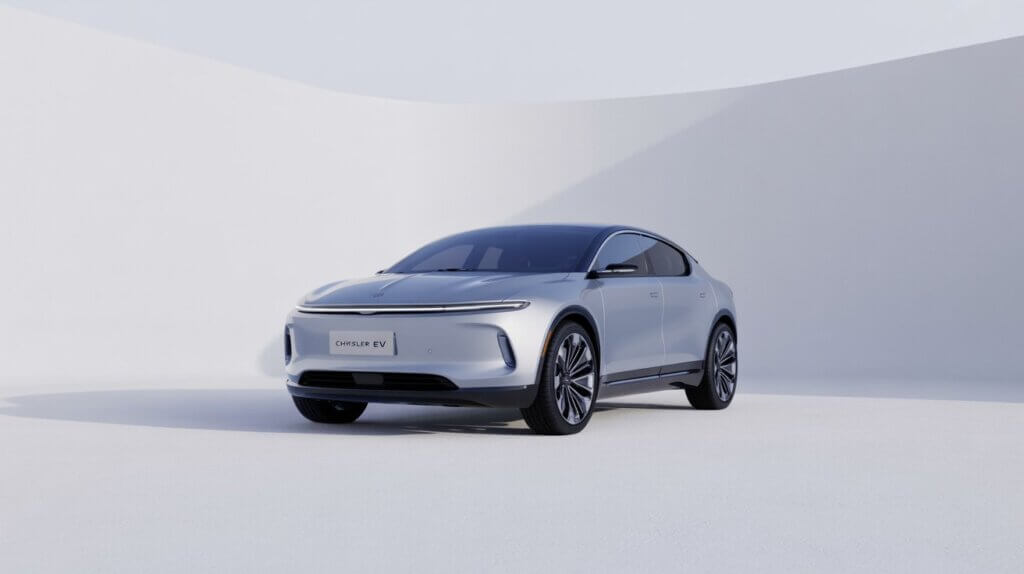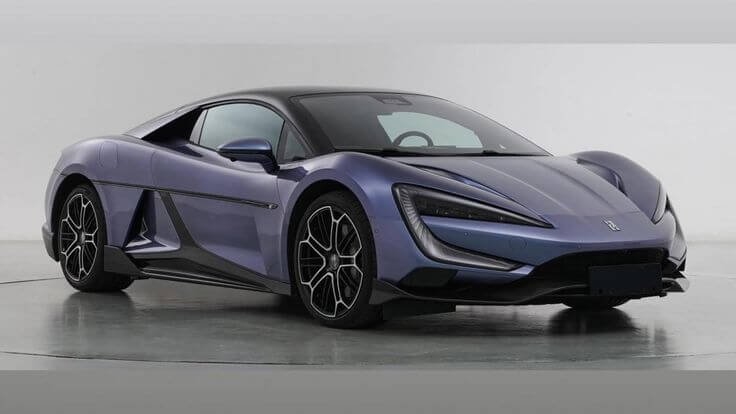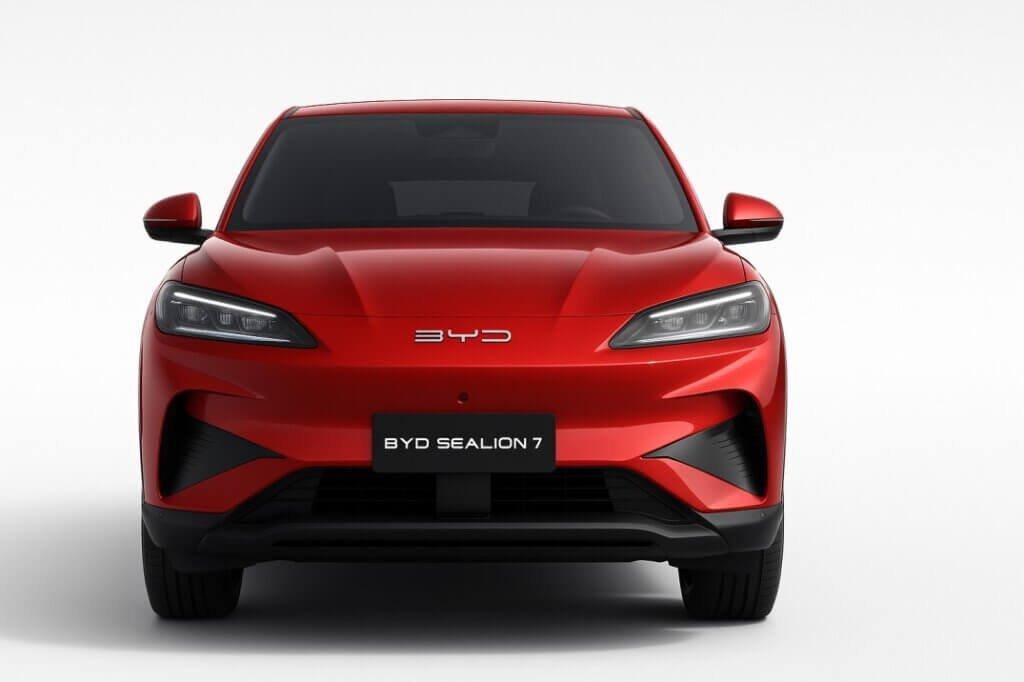Chrysler, a name synonymous with American automotive history, is embarking on its most significant transformation yet. For years, the brand’s lineup has been relatively lean, but a powerful electric shift is underway. The hotly anticipated Chrysler EV crossover, often hinted at through concepts like the Airflow, represents not just a new model, but a definitive statement of intent for the brand’s future. It’s designed to bring Chrysler back into the heart of the competitive crossover segment, this time with a silent, emission-free powertrain and a host of advanced technologies.
But what exactly can we expect from this pivotal new vehicle? Let’s peel back the layers to understand the specs, the platform underpinning it, and how Chrysler aims to carve out its niche in the rapidly expanding electric vehicle market.
Table of Contents
The Dawn of a New Era: Chrysler’s First All-Electric Model
While details are still emerging, and the production name remains under wraps (though “Airflow” has been a strong contender), the essence of Chrysler’s first all-electric model is clear: it’s a stylish, spacious crossover designed to offer both performance and practicality. This isn’t just an electrified version of an existing model; it’s a ground-up EV built on a dedicated electric platform, promising optimized packaging and performance.

The concept vehicles have showcased a sleek, aerodynamic design language, blending modern aesthetics with classic Chrysler elegance. Inside, we anticipate a cabin that prioritizes digital integration, comfort, and sustainable materials, aligning with the growing consumer demand for environmentally conscious yet luxurious transportation.
Under the Skin: The STLA Large Platform
At the heart of Chrysler’s new EV crossover lies the Stellantis STLA Large platform. This isn’t just a basic EV architecture; it’s a highly flexible, BEV-native platform engineered to underpin a wide range of future D- and E-segment vehicles across Stellantis brands.
What does STLA Large bring to the table?
- Scalability: The platform can accommodate various battery sizes and motor configurations, allowing for different range and performance variants. This means Chrysler can offer options catering to diverse buyer needs.
- Performance Capability: Designed for both 400-volt and 800-volt architectures, the STLA Large platform is capable of delivering impressive power, with some configurations targeting 0-60 mph times in the 2-second range. While the Chrysler crossover may not hit those extreme figures, it suggests plenty of potential for brisk acceleration.
- Long Range Potential: Stellantis states that vehicles built on STLA Large can achieve up to 500 miles (800 km) of range on a single charge, depending on the battery size and vehicle type. For the Chrysler crossover, expectations are for a competitive range of over 300 miles, potentially closer to 400 miles with larger battery options.
- Fast Charging: The platform is engineered for rapid charging, potentially adding many miles of range in a short time, significantly reducing “range anxiety” for long-distance travel.
- Technological Integration: STLA Large is designed to integrate seamlessly with Stellantis’s next-generation electrical and software-defined vehicle technologies, including STLA Brain (AI-enabled E/E architecture), STLA SmartCockpit (advanced infotainment and UX), and STLA AutoDrive (advanced driver-assistance systems up to Level 3 autonomy). This is where the real-world intelligence of the vehicle will shine.
For a deeper dive into the broader implications of Stellantis’s platform strategy, you might find our analysis of the future of electric mobility fascinating.
Expected Specs and Features
While official production specifications are still being finalized, based on concept vehicles and information surrounding the STLA Large platform, we can make some informed predictions:
- Battery and Range: The Chrysler EV crossover is likely to feature a battery pack around 100-118 kWh. This capacity, combined with the STLA Large platform’s efficiency, should translate to an EPA-estimated range of well over 300 miles, with some sources suggesting up to 400 miles. This would place it among the leaders in its segment for range.
- Power and Performance: The concept version showcased dual motors, suggesting an all-wheel-drive configuration with a combined output expected to be close to 400 horsepower. This should provide strong acceleration for a family crossover, potentially hitting 0-60 mph in the 5-second range.
- Charging: With 400V and potentially 800V capabilities, expect competitive DC fast charging speeds, allowing for significant range replenishment in around 30 minutes.
- Interior and Technology: The cabin is anticipated to be a tech-forward space, featuring large, integrated digital displays akin to a “Hyperscreen” setup. Over-the-air (OTA) updates will ensure the vehicle’s software and features remain current. Expect advanced connectivity, voice assistants, and a focus on premium materials.
- Safety and Driver-Assist: Leveraging the STLA AutoDrive system, the crossover will come equipped with a comprehensive suite of safety features, including automated emergency braking, lane-keeping assist, and adaptive cruise control. The promise of Level 3 autonomous driving capabilities down the line will be a significant draw for tech-savvy buyers.
Pros and Cons of Chrysler’s EV Crossover
Pros: The adoption of the STLA Large platform is a major advantage, promising competitive range, performance, and charging capabilities right out of the gate. Its potential for over 300 miles of range addresses a key concern for many EV buyers. The interior is expected to be a technological showcase, offering a truly modern and connected experience. Furthermore, Chrysler’s reputation for comfortable and spacious vehicles will likely translate well into this EV crossover, making it a compelling option for families. The emphasis on over-the-air updates means the vehicle can improve and gain new features throughout its lifespan, enhancing its long-term value.
Cons: As a late entrant to a crowded and competitive EV crossover market, Chrysler faces an uphill battle against established players. The production schedule has seen delays, which could impact its initial momentum. While the concept is appealing, the final production design and pricing will be crucial in determining its success. Without a significant charging infrastructure build-out by Chrysler/Stellantis, reliance on third-party networks will be key. Lastly, breaking away from the brand’s long-standing, albeit shrinking, internal combustion engine legacy to an all-electric future requires a strong marketing push and consumer education.
Comparison with the Competition
The Chrysler EV crossover will enter a fiercely competitive segment, going head-to-head with popular models like the Ford Mustang Mach-E, Hyundai Ioniq 5, Kia EV6, and potentially even the Tesla Model Y.

- Range: With a target of over 300 miles, the Chrysler aims to be competitive with or even exceed many rivals, challenging the Mustang Mach-E and Ioniq 5.
- Platform Advantage: The STLA Large platform’s inherent flexibility and potential for advanced capabilities could give the Chrysler an edge in terms of future-proofing and performance potential compared to some older EV architectures.
- Interior and Tech: Chrysler’s focus on a luxurious, digitally integrated cabin with Level 3 autonomous driving potential could set it apart, especially against more utilitarian offerings.
- Brand Perception: Chrysler needs to re-establish itself in the minds of modern car buyers, particularly in the EV space, where brands like Tesla and Hyundai/Kia have already built strong reputations. Its success will hinge on demonstrating genuine innovation and reliability.
Thinking about other groundbreaking electric vehicles? Check out our article on the Alfa Romeo Giulia EV’s potential impact for another perspective on Stellantis’s electric future.
Pricing and Ownership Insights
While no official pricing has been announced, industry estimates suggest a starting MSRP around $50,000, placing it in line with many of its direct competitors. Higher trims with larger batteries and more features would naturally command a higher price.
From an ownership perspective, EV advantages like lower fuel costs (electricity vs. gasoline), reduced maintenance due to fewer moving parts, and potential federal and local tax incentives will make the Chrysler EV crossover an attractive proposition. The anticipated over-the-air updates should also help maintain the vehicle’s technological relevance and potentially enhance resale value over time.
Conclusion: A Bold Step for Chrysler
The Chrysler EV crossover represents a bold and essential step for the brand. Built on the capable STLA Large platform, it promises a compelling blend of competitive range, strong performance, and a highly advanced, luxurious interior. While it enters a crowded market, Chrysler’s commitment to advanced technology and a focus on driver and passenger experience could help it stand out.
This is a vehicle designed for the modern family and the tech-savvy individual seeking a comfortable, capable, and future-proof electric SUV. Its success will be a critical indicator of Chrysler’s ability to not just survive, but thrive in the electric automotive landscape.
FAQ Section
Q1: What is the official name of Chrysler’s first all-electric crossover?
While various concept vehicles, most notably the Airflow, have showcased Chrysler’s electric crossover ambitions, the official production name has not yet been formally announced. It’s possible the “Airflow” name will be used, but Chrysler has indicated that the production vehicle might not carry that name. We anticipate a reveal of the final name closer to its official launch.
Q2: What platform is the Chrysler EV Crossover built on?
The Chrysler EV crossover will be built on the Stellantis STLA Large platform. This is a dedicated, BEV-native architecture designed to be highly flexible and scalable, supporting a wide range of vehicles across Stellantis brands, from D-segment to E-segment cars, crossovers, and SUVs.
Q3: What kind of range can I expect from Chrysler’s electric crossover?
Chrysler’s EV crossover is expected to offer a competitive driving range. Based on the capabilities of the STLA Large platform and previous concept announcements, it’s anticipated to deliver an EPA-estimated range of over 300 miles, with some configurations potentially reaching up to 400 miles on a single charge, depending on the battery size.
Q4: When is the Chrysler EV Crossover expected to be released?
While initial concepts suggested an earlier release, the production version of Chrysler’s EV crossover, internally known as the C6X, is currently expected to debut in 2026 as a 2027 model year vehicle. There have been some development pauses and shifts in strategy, but this timeline appears to be the most current projection.
Q5: Will the Chrysler EV Crossover offer all-wheel drive?
Yes, the Chrysler EV crossover is expected to offer all-wheel drive (AWD). The concept vehicles have been shown with dual electric motors, one at each axle, which inherently provides an AWD configuration for enhanced traction and performance.
Q6: What are the expected charging capabilities of this new EV?
The STLA Large platform on which the Chrysler EV crossover is built supports both 400-volt and 800-volt electric architectures. This means it’s engineered for fast charging, with the potential for significant range to be added in a relatively short period, likely around 20-80% charge in about 30 minutes on a DC fast charger.
Q7: What kind of interior technology and features will it have?
Expect a highly advanced and digitally integrated interior. The Chrysler EV crossover is anticipated to feature large, interconnected digital screens for the instrument cluster and infotainment, similar to a “Hyperscreen” layout. It will also utilize Stellantis’s STLA SmartCockpit and STLA Brain software platforms, providing advanced user experience, AI-enabled features, and over-the-air (OTA) updates for continuous improvement.
Q8: How does Chrysler’s EV crossover compare to competitors like the Tesla Model Y or Ford Mustang Mach-E?
The Chrysler EV crossover aims to compete directly with models like the Tesla Model Y and Ford Mustang Mach-E in terms of range, performance, and advanced technology. It is expected to offer competitive range and acceleration. Its key differentiator will likely be its focus on spacious, luxurious interiors, and the integration of Stellantis’s advanced STLA software ecosystem, including potential Level 3 autonomous driving capabilities.
Q9: Will there be different trim levels or battery options?
While specific trim levels haven’t been detailed, it’s highly probable that Chrysler will offer different configurations of its EV crossover. The STLA Large platform’s flexibility allows for various battery pack sizes and electric drive module (EDM) configurations, which means consumers will likely have choices regarding range, power output, and feature sets across different trim levels.
Q10: What safety features will the Chrysler EV Crossover include?
The new EV crossover will benefit from Stellantis’s STLA AutoDrive system, which encompasses a comprehensive suite of advanced driver-assistance systems (ADAS). Expect features such as automated emergency braking with pedestrian detection, lane departure warning with lane keep assist, adaptive cruise control, and potentially advanced Level 2+ hands-free driving capabilities, with the possibility of Level 3 autonomous driving in the future. You can find more information about vehicle safety ratings from trusted sources like the NHTSA website.

